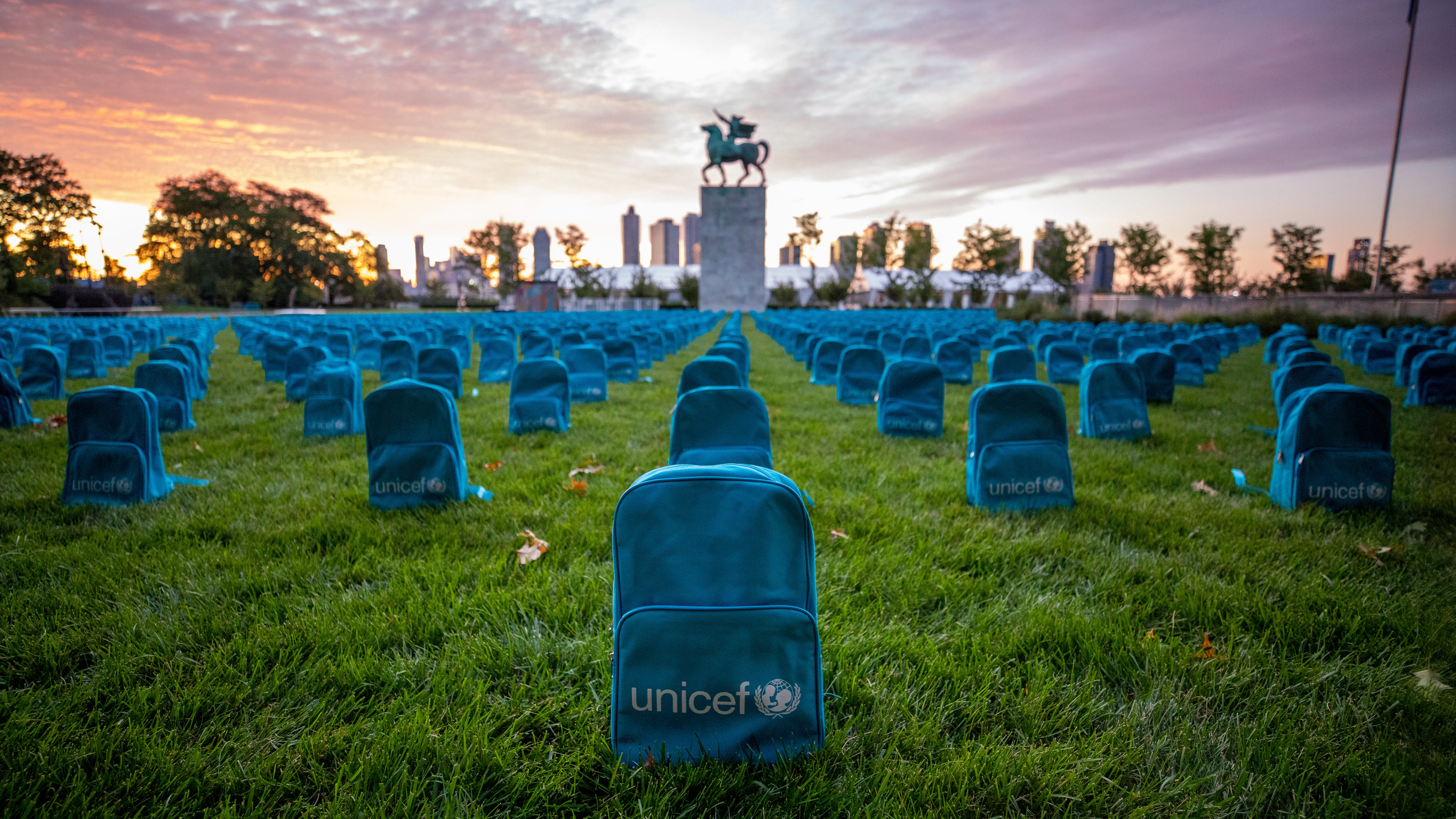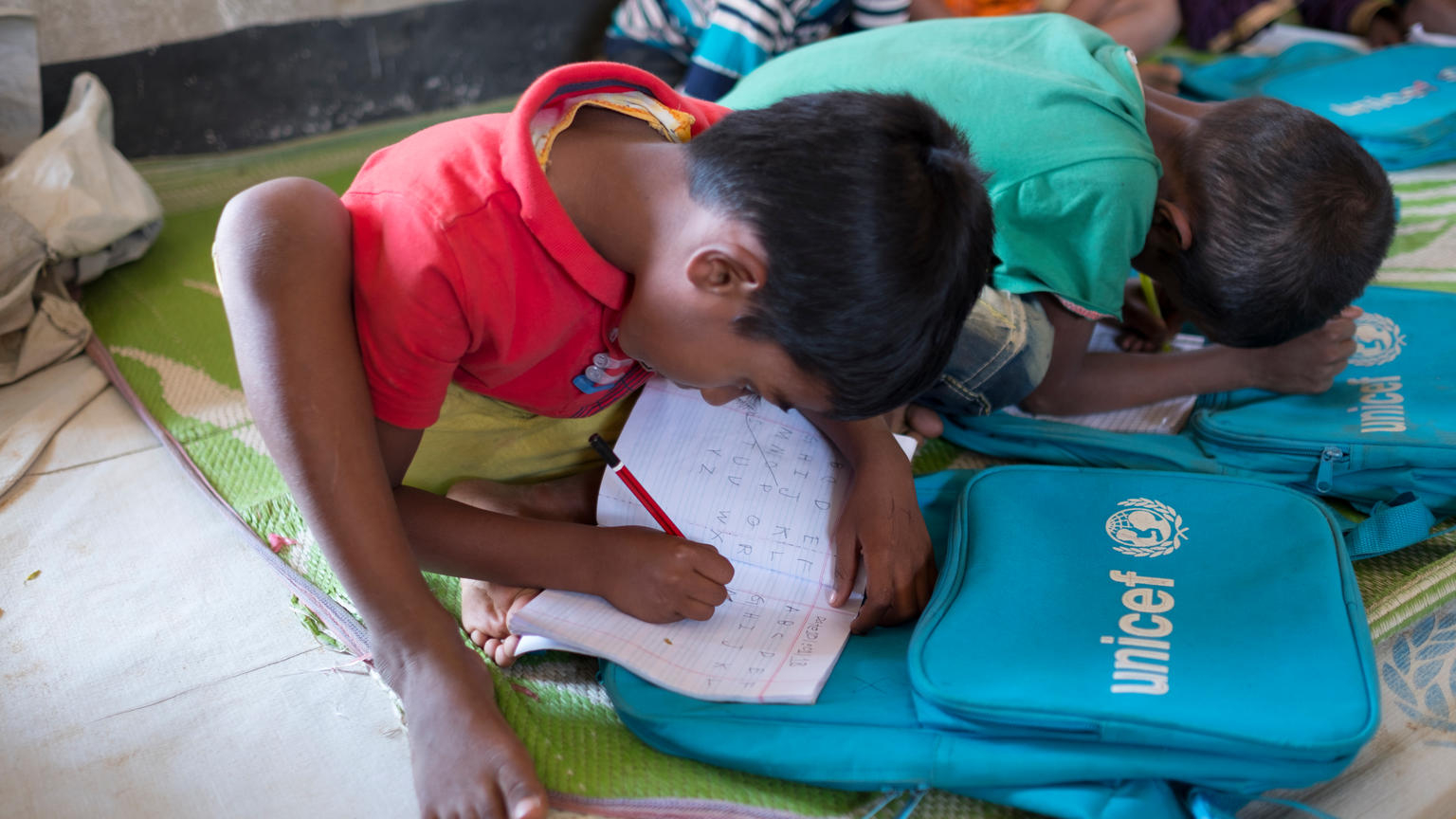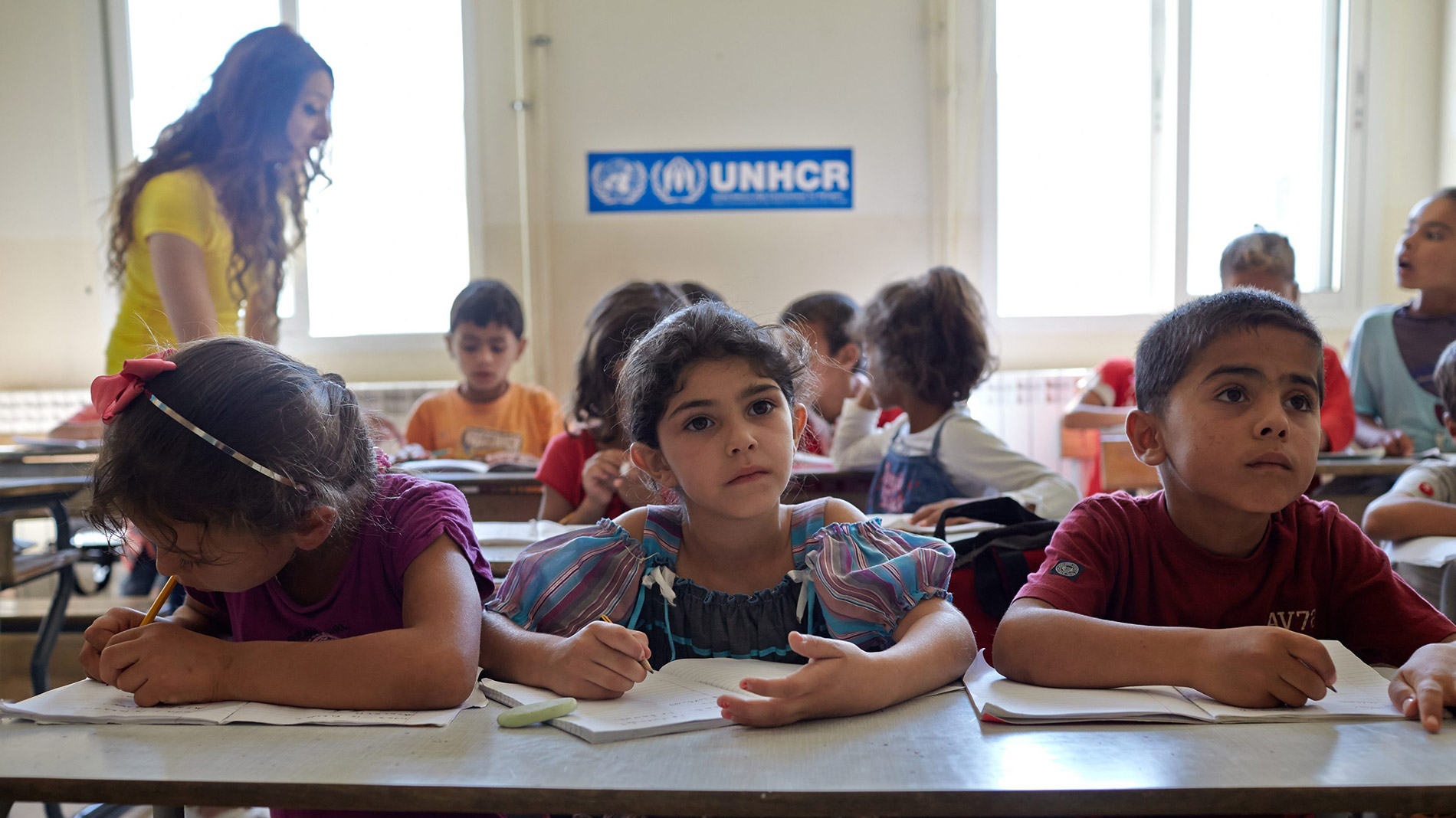

UNICEF installation highlighting the grave scale of child deaths in conflict during 2018 on the North Lawn at the United Nations Headquarters, September 8, 2019. / Courtesy of UNICEF
The new school year is now starting, but what is an exciting time for children and teenagers around the world also serves as a reminder of all of those that, due to conflicts, are either dead or don't have access to education. To mark the return to school season, UNICEF launched an installation to "show the devastating scale of child deaths in conflict zones in 2018."
The display in the United Nations headquarters in New York features "3,758 backpacks in rows reminiscent of a graveyard, each one representing a senseless loss of a young life to conflict," said the organization in a press release.
“UNICEF backpacks have always been a symbol of hope and childhood possibility,” said UNICEF Executive Director Henrietta Fore. “In just two weeks, world leaders gathering at the UN General Assembly will celebrate the 30th anniversary of the Convention on the Rights of the Child. This installation should remind them of the stakes.”
The 2019 Annual Report of the Secretary-General for Children and Armed Conflict states that more than 12,000 children were killed or maimed in conflict zones last year – the highest number since the UN started monitoring this violation. But the numbers might be higher since these are only related to verified incidents, states the press release.

Rohingya refugee Ehsan, 7, writes out the alphabet at a UNICEF learning center in Balukhali makeshift settlement, Cox's Bazar District, Bangladesh, January 2018./ Courtesy of UNICEF
September 10 is the last day of the installation. After New York, the backpacks will be put to use by children supported by UNICEF.
UNICEF estimates that 34 million children are living through conflict and disaster this year, including 6.6 million children in Yemen, 5.5 million in Syria, another 4 million in the Democratic Republic of Congo, and 3.7 million in South Sudan.
Young refugees' education: older means less learning opportunities
Among those in need are 7.1 million refugee youngsters of school age. A UN refugee agency (UNHCR) report indicates that more than half of that number, 3.7 million, don't go to school or receive lessons.
"The barriers that prevent them from accessing learning become harder to overcome as they get older," said the UN, adding that "only six in 10 refugee children attend primary school – compared to nine in 10 globally – and only around two in 10 refugees get a secondary education, compared to the world average of more than eight in 10."

Syrian refugee students attend a class in an accelerated learning program at a public school in Kamed Al Louz in the Bekaa Valley, Lebanon/ Courtesy of UNHCR
UN notes that "the trend is even clearer in higher education, where only three in every 100 refugee children can pursue their learning, compared with the world average of 37 in 100."
The UNHCR report, quoted by the UN, states that this problem "mainly affects poorer countries, which offer shelter to families fleeing conflict and natural disasters, despite frequently lacking sufficient resources themselves."
In Europe, most countries place refugee children into mainstream education, except for Greece and a handful of Balkan States, “where refugees are in limbo and still seeking asylum," said Melissa Fleming, spokesperson for the agency’s High Commissioner.
The UN official noted that the "lack of capacity of the Greek State" leaves "thousands and thousands of asylum seekers, many of them children, many unaccompanied minors" without access to education.
According to the press release, stateless children are one of the agency's biggest concerns, because many minors lack documents, so they are refused access.
The report indicates that there is a lack of funding for refugee enrollment in secondary schools, so the UNHCR appeals to governments, private sector, donors, and educational organizations to invest in this field. A second appeal aims to promote the inclusion of more refugees in the national education systems.
There is also the UNHCR’s "secondary school initiative," which focuses on building or refurbishing schools, in teacher training, and supporting families so that the children can go to school, often outside the places they found shelter.

Copyright © 2018 CGTN. Beijing ICP prepared NO.16065310-3
Copyright © 2018 CGTN. Beijing ICP prepared NO.16065310-3